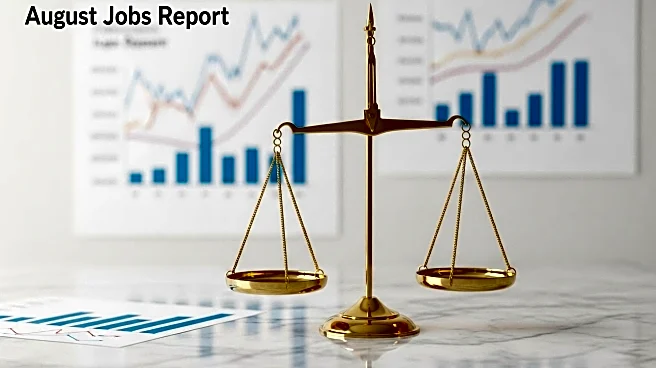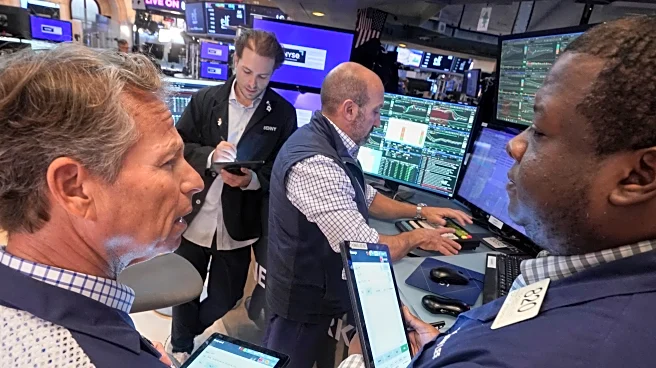What is the story about?
What's Happening?
The Producer Price Index (PPI), which measures wholesale costs in the U.S. economy, showed a surprising 0.1% decline in August. This development has led to expectations of a Federal Reserve rate cut in the upcoming policy meeting. Analysts, including Chris Larkin from E-Trade and David Russell from TradeStation, suggest that the PPI data, combined with recent weak jobs reports, supports the likelihood of rate cuts. Citigroup economist Andrew Hollenhorst noted that inflationary pressures appear muted, reinforcing the expectation of a 25 basis point cut in September, with further cuts anticipated at subsequent meetings. The Consumer Price Index (CPI) reading, due soon, is expected to provide additional insights into inflation trends and influence the Fed's decision-making process.
Why It's Important?
The PPI report's implications are significant for U.S. monetary policy and economic outlook. A rate cut by the Federal Reserve could stimulate economic activity by making borrowing cheaper, potentially boosting consumer spending and investment. This is particularly relevant given recent weak employment data, which suggests a need for economic support. The muted inflationary pressures indicated by the PPI may alleviate concerns about rising prices, allowing the Fed to focus on growth. However, the upcoming CPI reading will be crucial in confirming these trends and guiding the Fed's actions. Stakeholders, including businesses and investors, are closely monitoring these developments as they could impact market sentiment and economic stability.
What's Next?
The Federal Reserve is expected to announce its rate decision following the CPI release. If the CPI aligns with the PPI's indication of subdued inflation, the Fed is likely to proceed with the anticipated rate cuts. This decision will be closely watched by financial markets, as it could influence stock prices, bond yields, and currency values. Additionally, businesses may adjust their strategies based on the cost of borrowing and consumer demand expectations. The broader economic impact will depend on how these monetary policy changes interact with other economic indicators and global market conditions.
AI Generated Content
Do you find this article useful?
















